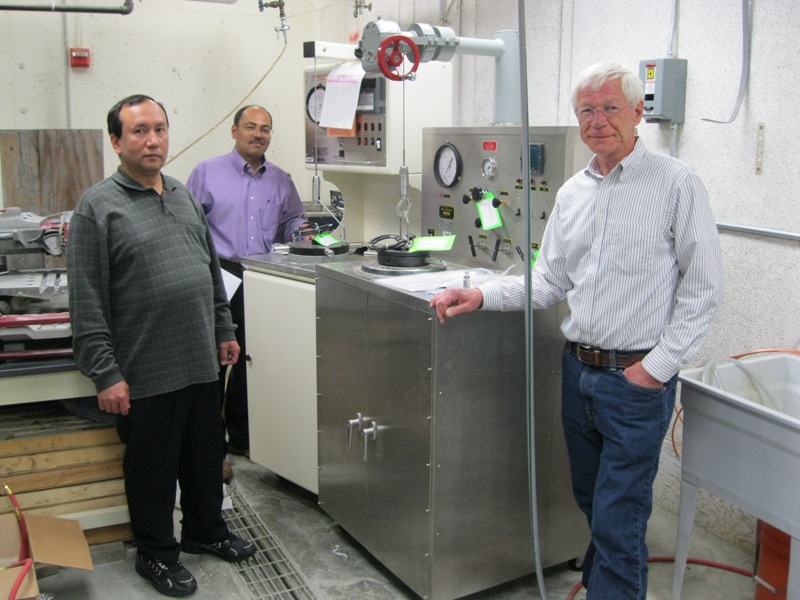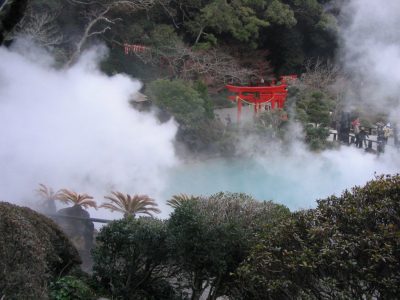University of Alaska Fairbanks installs advanced well cement testing equipment
The University of Alaska Fairbanks (UAF) installs advanced well cementing testing equipment, partly supported by technology and resource development company Trabits Group. Trabits Group and UAF have received a DOE GTP grant for the development of a lightweight, high-temperature, high-pressure geothermal cement.
Petroleum engineering students at the University of Alaska Fairbanks will now enjoy access to cutting edge well cement testing technology, thanks in part to technology and resource development company Trabits Group, LLC., so a release by the company recently.
Trabits Group, privately held, specializes in technology and resource development. The company has its headquarter in Wasilla, Alaska. It holds a worldwide license for a cement and drilling fluid technology with zeolite that has been developed by Halliburton Energy Services. The company also holds a stake in a geothermal power project in Western Nevada.
“Trabits Group continues to be impressed with the UAF professors and their dedication to training the future petroleum workforce for Alaska,” said Trabits Group President George Trabits. “We are fortunate to have partnered with UAF in a proposal to the Department of Energy to develop a high-temperature, high-pressure geothermal well cement. The Trabits Group / UAF proposal was one of four geothermal technologies projects in Alaska selected for funding by DOE and the only geothermal well cement project selected in the U.S.”
The new equipment, installed this summer at UAF’s Petroleum Development Laboratory (PDL) brings to Alaska cement testing technology that previously existed only in the other U.S. states, providing not only the ability to conduct cementing research in Alaska but training for Alaska’s future oil, gas and geothermal resource workforce. It also plays a key role in promoting and advancing the science of cementing, a crucial component of safe and responsible drilling practices.
“We’re very excited to welcome the addition of this state-of-the-art equipment to the PDL,” said PDL Director Shirish Patil. “Already two of our graduate students have been trained by Halliburton at their Wyoming Training Center to work on this equipment.” The project also supports a member of the research faculty and an undergraduate student assistant who is currently being trained by Baker Hughes in their Bakersfield, Calif., facility.
The Department of Energy Geothermal Technologies Award has been granted to Trabits Group and partner UAF to develop a lightweight, high-temperature, high-pressure geothermal cement. This new cement will provide operators with an easy-to-use, flexible cementing system that saves time and simplifies logistics. The cement development research is funded by a $2.15 million grant through the American Reinvestment and Recovery Act of 2009 (ARRA). Total project costs are estimated at approximately $2.69 million. The Trabits Group will contribute $268,111 toward the total amount, with industry partners providing in-kind cost share of an additional $270,446.
“This research project truly meets U.S. Department of Energy, University of Alaska Fairbanks and Trabits Group objectives: Joint collaboration between the government, academia and industry for research and development, as well as student training, advancement and placement in the American workforce,” Patil said.
The new well cement testing equipment installed at UAF includes:
- High-temperature, high-pressure consistometers to measure cement’s thickening time under extreme conditions.
- An ultrasonic cement analyzer (UCA) system that helps to continuously monitor cement composition development trends during the curing process. Testing takes place inside a pressure- and temperature-controlled curing chamber and is completed without destroying the cement sample.
- A fluid loss cell to measure the loss of water from cement slurry, ensuring cement strength is not compromised when set.
- A six-speed viscometer, which measures viscosity of cement slurries.
Source: Company release by email, Alaska Business Monthly



















